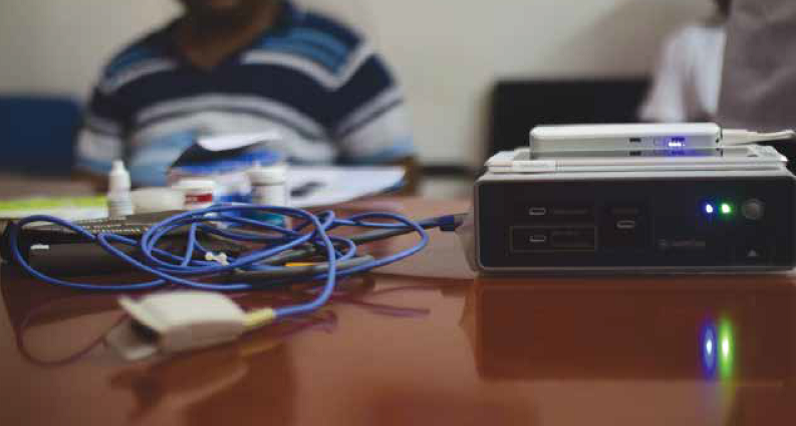Affordable and Accessible Diagnosis
Affordable and Accessible Diagnosis
Problem
The Chatra district of Jharkhand lacks adequate health infrastructure to serve a population of 10.42 lakhs. Currently, only 32 doctors, 28 regular and 8 contractual, serve in the many health centers at various levels (1 District Hospital, 6 CHCs, 8 PHCs and 93 HSCs). Further, Chatra’s location and demography makes healthcare inaccessible and costly.
The problem worsens with the unavailability of laboratories which are responsible for conducting diagnosis. First, there is often a sudden peak in diseases like malaria because of absence of these facilities at the village level. Second, the villagers are compelled to pursue local quacks, who are not substitutes of scientific technologies. Therefore, the district administration has adopted measures to provide easy and affordable diagnostic facilities to rural families.
The solution

Project Nandi, an initiative to make healthcare accessible and affordable, has been introduced in blocks of the Chatra district. The Aspirational District Fellows were responsible for introducing the Bangalore based HealthCube to the hospitals in Chatra.
The HealthCube team has created a tablet-based portable device that is capable of performing quick diagnostic tests. The costs of these diagnostic tests is much lower than the prevalent market costs. Therefore, people from rural areas are more likely to afford it than using other expensive alternatives. The accurate diagnostic ability of this device compensates for the unavailability of laboratories in the villages.
Under Project Nandi, the Chatra district administration is periodically organising health camps in the remote villages wherein they use HealthCube to conduct tests. The lab technicians use this device to conduct upto 24 tests ranging from tuberculosis to HIV. Medical staff and specialists are invited to these camps to prescribe treatment post the diagnosis.
The medical staff has also started using HealthCube devices to maintain uniformity in the data possessed by lab technicians and doctors. The lab technicians use the bluetooth feature of this device to transfer the results of the diagnosis on to a web portal. This data can then be accessed by the doctors who can prescribe suitable treatment. The accumulation of data is further used by the district administration to analyse whether a disease is prevalent in a given region.
The features of portability, accuracy, quickness, and trustworthiness in HealthCube devices demonstrates that it is an easy solution for the two aforementioned problems. Further, it can also be scaled up to cover the rest of Chatra. Hence, the district administration is planning to reach the level of HSC and ANM workers. The vision is to narrow down to the household level such that they can avail affordable diagnosis services in case of emergencies.
Source : Public System Strengthening in Aspirational Districts
Last Modified : 8/23/2021
This topic provides information about antibiotic r...
This topic provides information about Rs. 1 Cess S...
This topic provides information about Defining Doc...
This topic provides information about World AIDS d...
